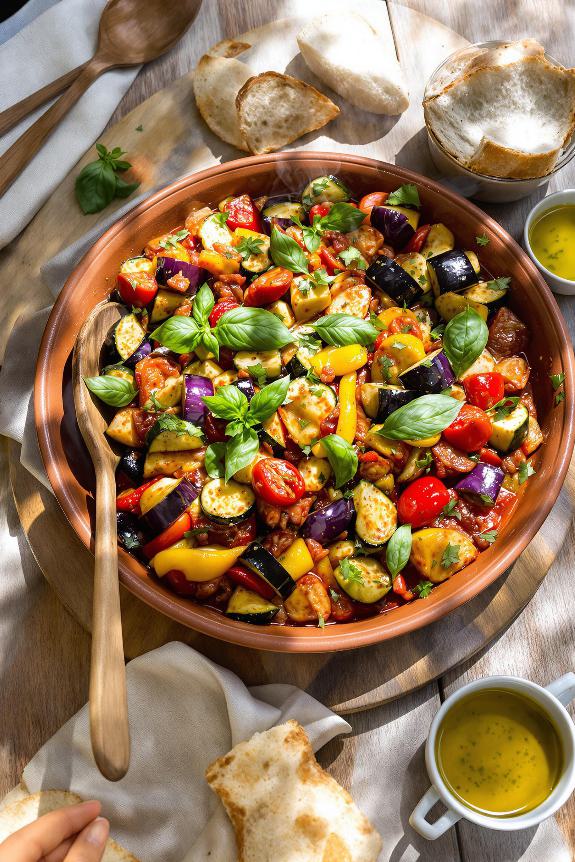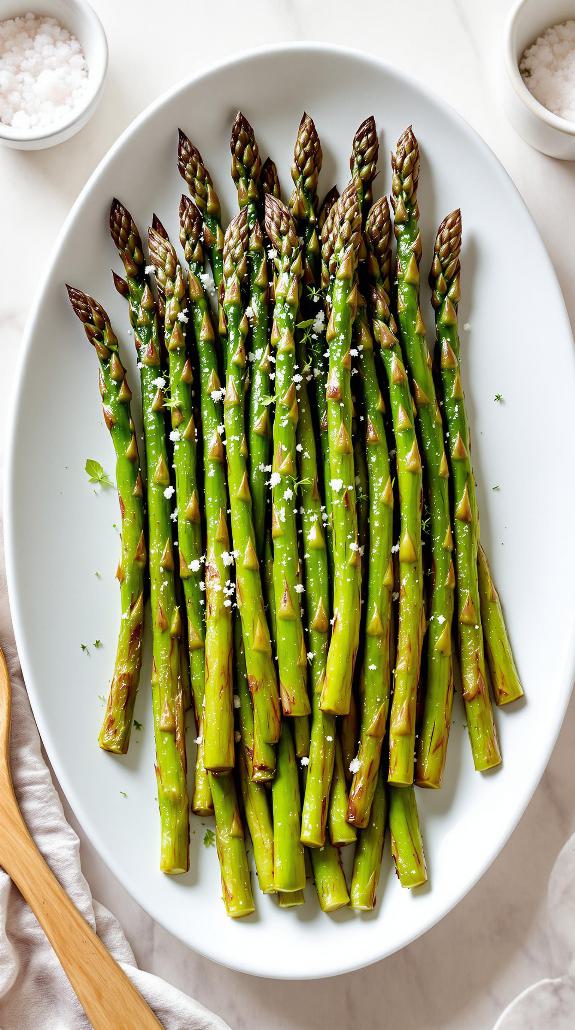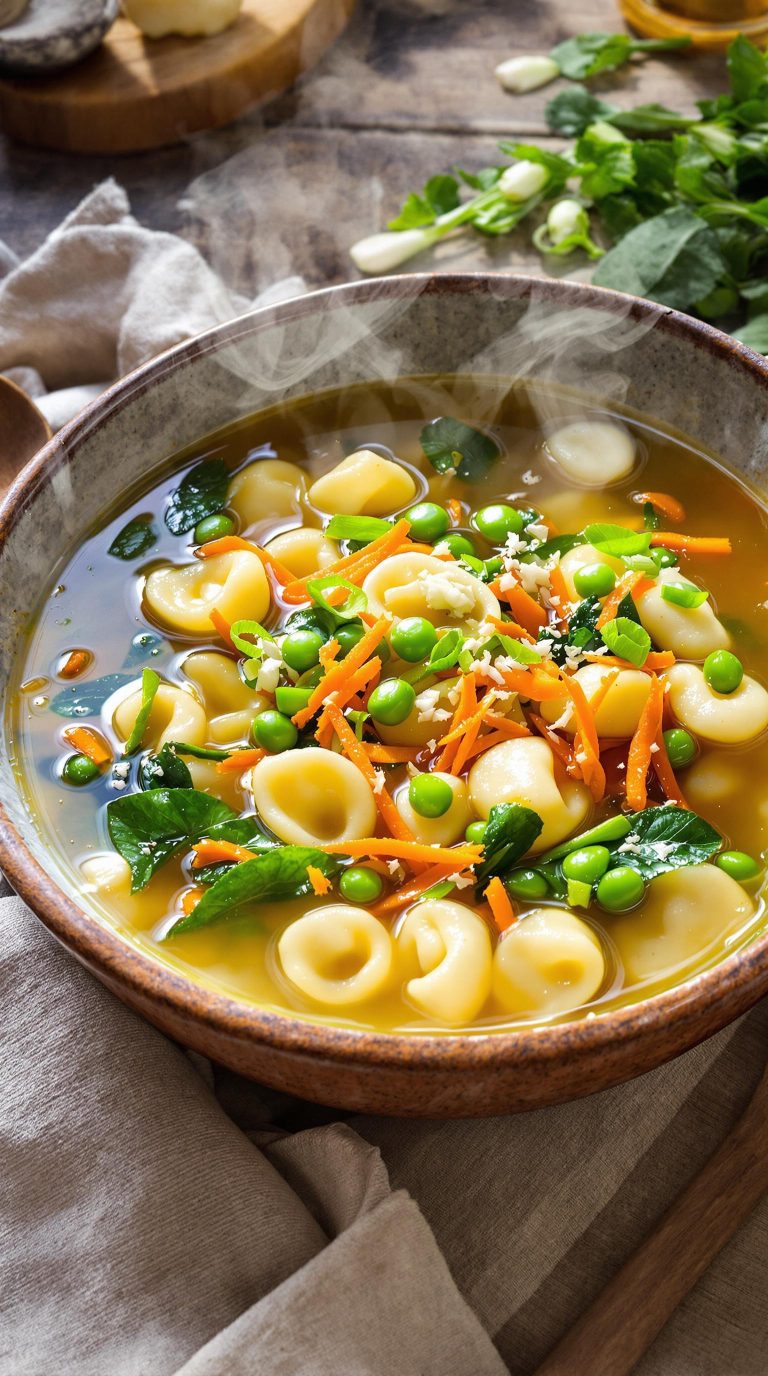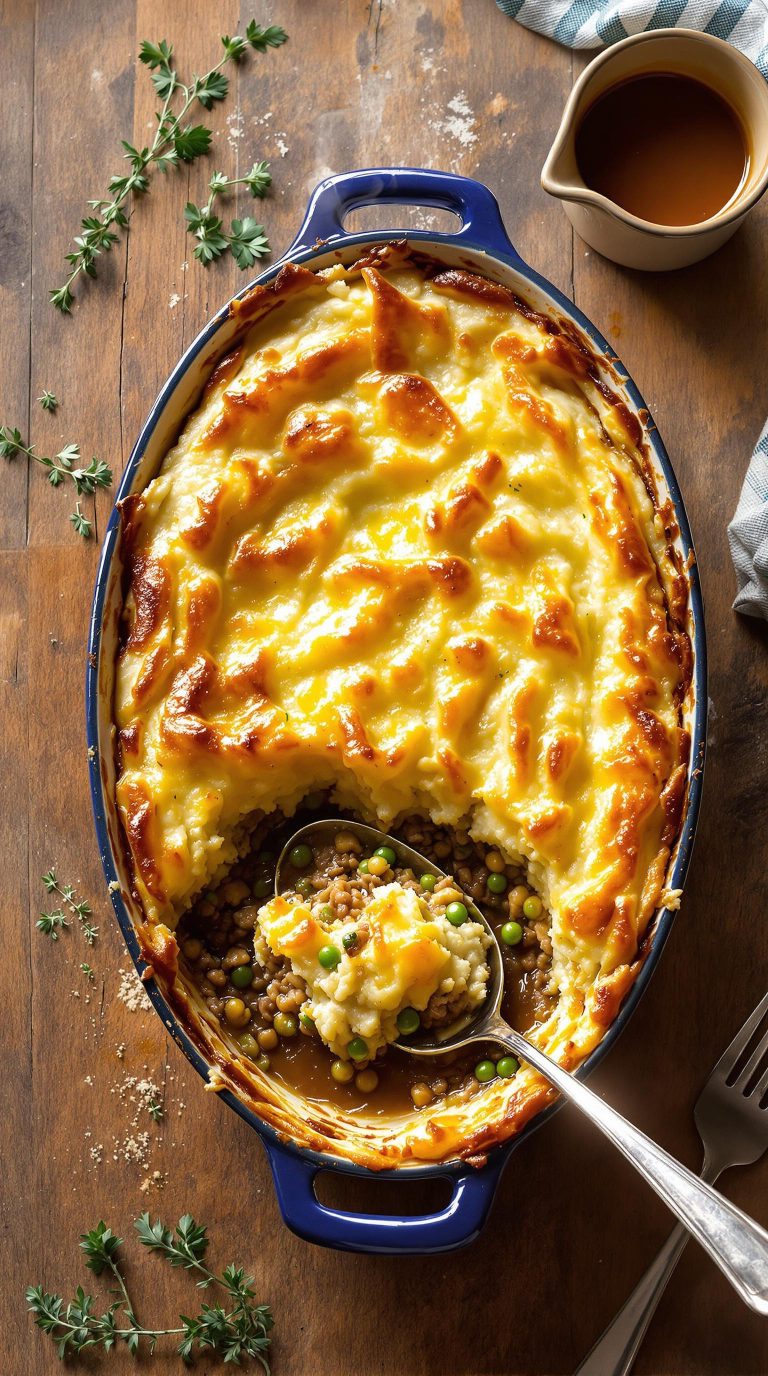Why You’ll Love this Mediterranean Garden Ratatouille
When you’re looking for a dish that captures the essence of Mediterranean sunshine, this garden ratatouille delivers in every way.
The combination of eggplant, zucchini, and peppers creates a symphony of textures that melt together during that slow 45-minute simmer.
I’m obsessed with how versatile this dish is—serve it hot as a main course with crusty bread, or chilled as a side.
Can you imagine anything more perfect for meal prep?
The herbs really make this special, with oregano and basil infusing every bite.
Simple ingredients, minimal effort, maximum flavor.
Pure Mediterranean magic in a pot.
What Ingredients are in Mediterranean Garden Ratatouille?
What Ingredients are in Mediterranean Garden Ratatouille?
Mediterranean ratatouille is a celebration of garden vegetables, simmered together with aromatic herbs until they create a deliciously harmonious dish. The beauty of ratatouille lies in its simplicity—fresh, seasonal produce that transforms into something much greater than the sum of its parts.
I consider it the ultimate Mediterranean comfort food, with each region adding its own little twist to the classic recipe.
- 1 large eggplant, cut into 1-inch pieces
- 3 medium zucchini, cut into 1-inch pieces
- 2 large green peppers, cut into 1-inch pieces
- 1 cup chopped onion
- 2 teaspoons finely minced garlic
- 2 cups crushed canned tomatoes
- 1 teaspoon dried oregano
- 1 tablespoon fresh basil (or 2 teaspoons dried basil)
- 2 teaspoons chopped parsley
- Fresh ground pepper to taste
- Olive oil (for sautéing)
When shopping for these ingredients, quality really does make a difference. Try to find the freshest vegetables possible—farmers markets are ideal during summer months when these veggies are at their peak.
The tomatoes form the base of the sauce, so while fresh is wonderful, good-quality canned crushed tomatoes work perfectly and provide a consistent flavor year-round.
As for the herbs, fresh basil will give you that aromatic punch that dried just can’t match, but dried works in a pinch. And don’t be afraid to adjust the proportions based on what looks good at the market—ratatouille is wonderfully forgiving that way.
How to Make this Mediterranean Garden Ratatouille
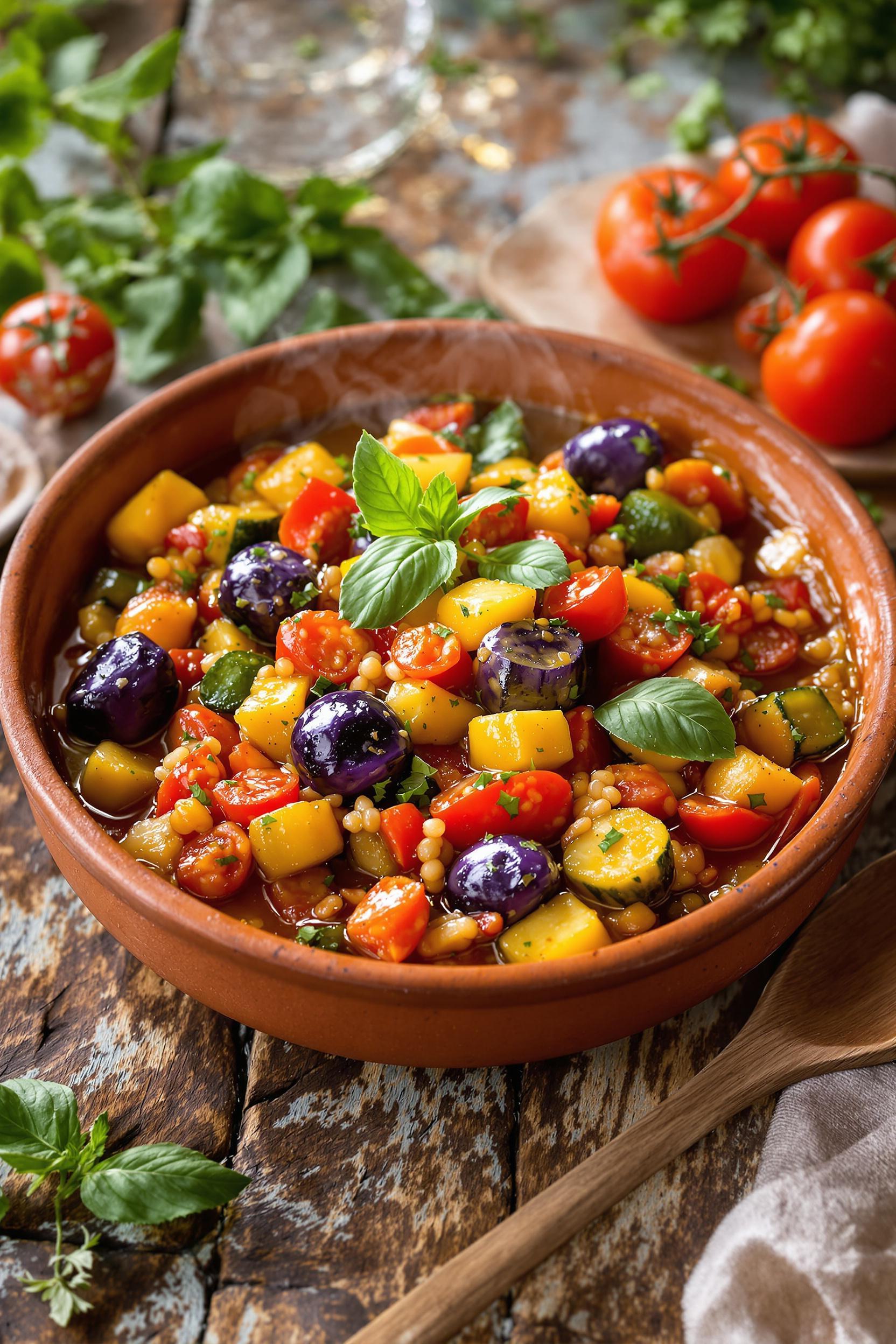
Making Mediterranean garden ratatouille is like orchestrating a vegetable symphony—each ingredient needs to enter at just the right moment. Begin by heating a generous splash of olive oil in a Dutch oven or large saucepan over medium heat. Add 2 teaspoons of finely minced garlic and 1 cup of chopped onion, then cook until they become translucent and tender, releasing their aromatic magic into the oil. This foundational flavor base will infuse throughout the entire dish. For best results, consider using premium Dutch oven cookware that provides superior heat retention and distribution for slow-cooked dishes like ratatouille.
Once your aromatics are soft and fragrant, it’s time for the star vegetables to join the party. Add your 1 large eggplant, 3 medium zucchini, and 2 large green peppers, all cut into uniform 1-inch pieces—this size guarantees everything cooks evenly. Sprinkle in 1 teaspoon of dried oregano, 1 tablespoon of fresh basil (or 2 teaspoons dried), and 2 teaspoons of chopped parsley. Give everything a good stir to coat the vegetables in oil and herbs, then sauté for about 5 minutes. This brief cooking period allows the vegetables to begin releasing their flavors while maintaining some structural integrity.
The final movement in our ratatouille creation involves adding 2 cups of crushed canned tomatoes, which form the saucy base that will slowly marry all the flavors together. Season with freshly ground pepper to taste (don’t we all love that little kick?), cover the pot, and let everything simmer over low heat for approximately 45 minutes. Using a cast iron Dutch oven provides excellent heat retention and distribution, ensuring your vegetables cook evenly throughout this simmering process. During this time, the vegetables will soften, the herbs will infuse, and the tomatoes will reduce slightly, creating that quintessential ratatouille texture—tender but not mushy, distinct yet harmonious.
The dish is wonderfully versatile in serving temperature; enjoy it hot from the pot, or cover and refrigerate to serve chilled the next day, when the flavors have had even more time to blend together.
Mediterranean Garden Ratatouille Substitutions and Variations
The traditional ratatouille recipe we’ve explored is just the beginning of your Mediterranean vegetable adventure.
I love how flexible this dish can be with what’s in your garden or fridge.
You can swap yellow squash for zucchini, add mushrooms for earthiness, or include bell peppers of any color.
Not a fan of eggplant? Try using more zucchini instead.
For extra protein, toss in chickpeas or white beans.
Herbs are another playground – rosemary, thyme, or even a pinch of lavender for a Provençal twist.
Want it spicier? A dash of red pepper flakes works wonders.
What to Serve with Mediterranean Garden Ratatouille
Beyond its colorful appeal, ratatouille pairs beautifully with a variety of accompaniments that can transform this humble vegetable medley into a complete meal.
I love serving ratatouille over fluffy couscous or quinoa, which soaks up that savory tomato sauce perfectly. Crusty French bread? A must-have for wiping your plate clean.
For protein, try grilled chicken, a simple white fish, or even fried eggs on top—the runny yolk creates a luxurious sauce that’s simply divine.
Want to go full Mediterranean? Add a side of hummus, olives, and feta cheese. Simple, unfussy, and absolutely delicious.
Final Thoughts
Ratatouille’s magic doesn’t just end with what you serve alongside it. This humble dish transforms simple garden vegetables into something truly extraordinary, a proof of Mediterranean ingenuity and respect for seasonal produce.
I love how ratatouille adapts to every season of life—comforting when warm, invigorating when chilled.
It’s the perfect make-ahead dish that actually improves with time as the flavors meld together.
Whether you’re a seasoned cook or kitchen novice, this dish forgives imperfection.
No two ratatouilles are ever identical, and isn’t that part of its rustic charm? Your version will tell your unique story.
